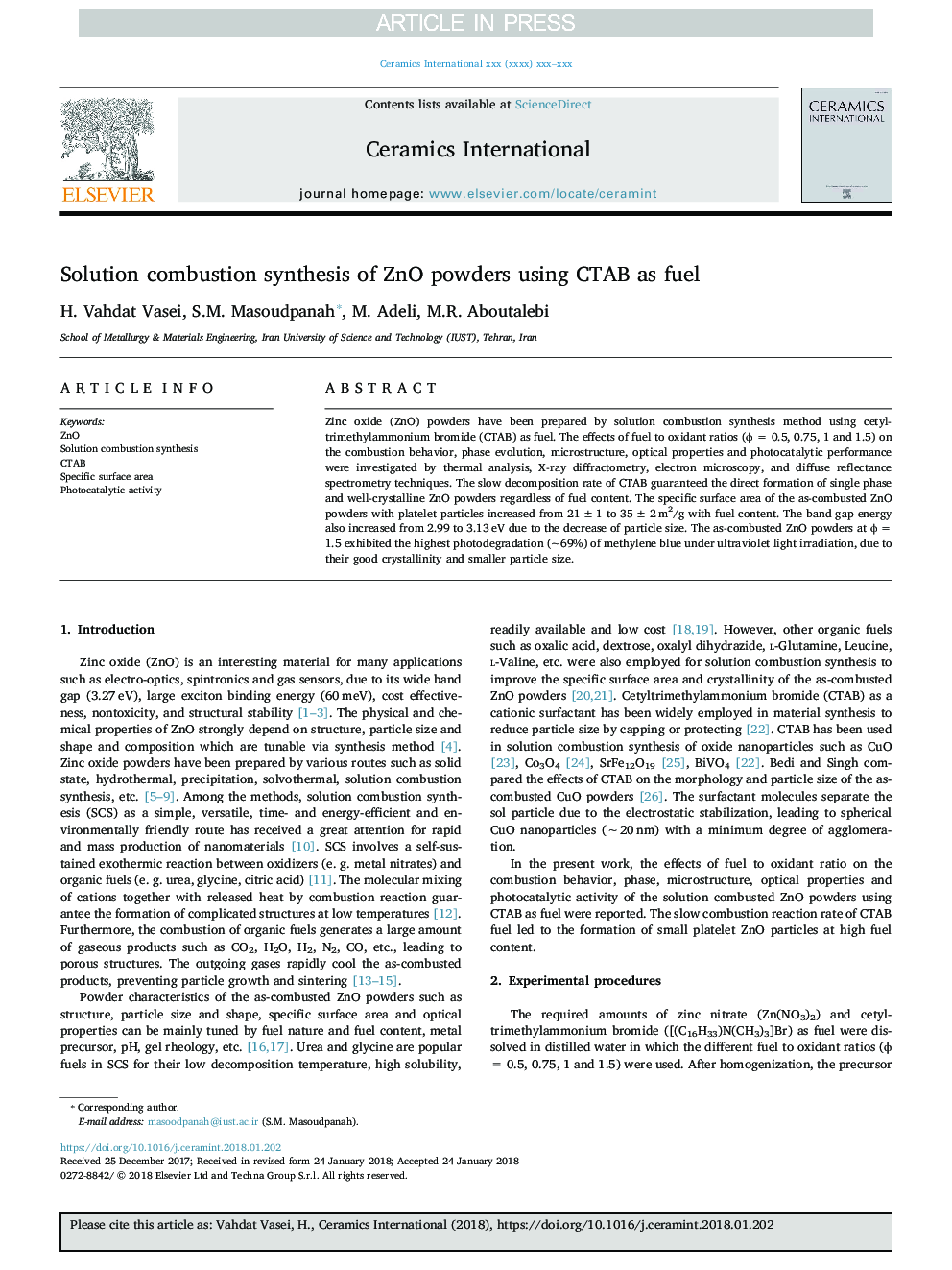| Article ID | Journal | Published Year | Pages | File Type |
|---|---|---|---|---|
| 7887638 | Ceramics International | 2018 | 5 Pages |
Abstract
Zinc oxide (ZnO) powders have been prepared by solution combustion synthesis method using cetyltrimethylammonium bromide (CTAB) as fuel. The effects of fuel to oxidant ratios (Ï = 0.5, 0.75, 1 and 1.5) on the combustion behavior, phase evolution, microstructure, optical properties and photocatalytic performance were investigated by thermal analysis, X-ray diffractometry, electron microscopy, and diffuse reflectance spectrometry techniques. The slow decomposition rate of CTAB guaranteed the direct formation of single phase and well-crystalline ZnO powders regardless of fuel content. The specific surface area of the as-combusted ZnO powders with platelet particles increased from 21 ± 1 to 35 ± 2â¯m2/g with fuel content. The band gap energy also increased from 2.99 to 3.13â¯eV due to the decrease of particle size. The as-combusted ZnO powders at Ï = 1.5 exhibited the highest photodegradation (~69%) of methylene blue under ultraviolet light irradiation, due to their good crystallinity and smaller particle size.
Related Topics
Physical Sciences and Engineering
Materials Science
Ceramics and Composites
Authors
H. Vahdat Vasei, S.M. Masoudpanah, M. Adeli, M.R. Aboutalebi,
